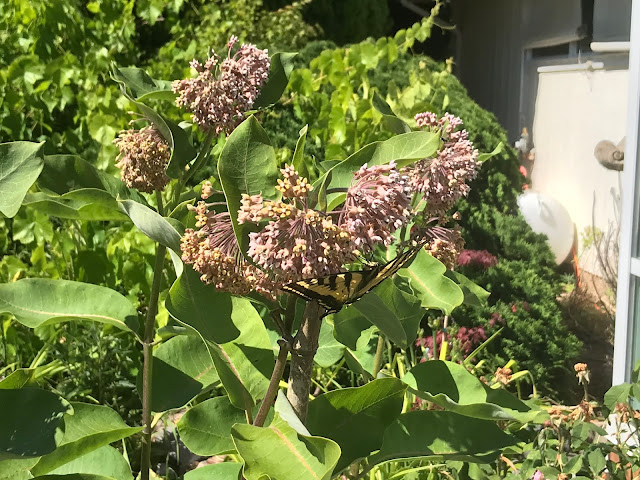 |
| Fig tree "Smith", about 7 years old. 7.5.18 |
 |
| Fig trees "Champagne" and "Atreano", about 7 years old. 7.5.18 |
I left the Smith for dead last year, after historic cold spell winter of 2016-2017 left most of the shoots looking dead. It survived and grew anyway. I thought it would have brebas this year, but they fell off. The main crop seems to be developing nicely.
The Champagne is an O'Rourke (Louisiana) development. It has not had many figs. It is starting to develop main crop. No brebas.
 |
| Fig tree "Brunswick", about 17 years old. 7.5.18 |
The Atreano has its first two brebas this year, nicely developing. There is some competition from a fir tree to its east. Main crop is also developing.
I moved the Brunswick at around 10 or 11 years old, to its current location. Much of the original trunk died over the subsequent years, but there was vigorous growth of new sprouts from ground level. It looked like there would be a lot of brebas, but only a few have not fallen off. Main crop is often lost to fall rains. We'll see how it does this year.
These trees have full South and West exposure, and some have full East exposure as well.
I'll have to post separately on the row of fig trees, south of the house. Some of those are more established as thriving in the Pacific Northwest.
I grew all of these trees from dormant cuttings. When small, some had winter protection, but I've left them unprotected for the past several winters. I did have deer fences surrounding them, but as they grow taller and seem to have tougher leaves, I removed the deer fencing. There is rare browsing of some lower shoots.













